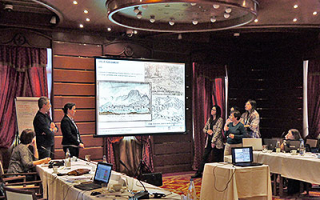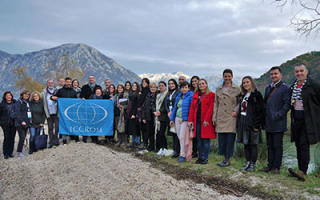How should decisions be made regarding projects in or near World Heritage properties? This was the subject under discussion recently in Kotor, Montenegro, where ICCROM coordinated a course on Heritage Impact Assessments, held 3 - 6 December 2018.
Twenty-seven participants came from six countries in South-East Europe where impact assessments are increasingly being requested to help in decision-making for development projects which may have positive or negative impacts on heritage places. The course aimed to improved participants’ ability to communicate their recommendations to other stakeholders by using clear and defendable assessment methodologies based on heritage values. In addition, emphasis was placed on proactive suggestions that could offer alternative solutions for projects so that benefits might be gained for both heritage and local communities. The World Heritage property of the ‘Natural and Culturo-Historical Region of Kotor’ was used as a case study by the participants, who examined real examples of development proposals within the core and buffer zones.
Impact assessment is one of the modules under the World Heritage Leadership Programme and activities are underway to improve existing approaches. This course was able to share the state of the art with participants and test emerging tools. In addition, the ICCROM team was able to gain insights into the reality of working at another World Heritage property and ensure that the work in progress is relevant to practitioners in the field and addresses their needs.
The course was implemented in cooperation with the National Commission of Montenegro for UNESCO, within the framework of the UNESCO World Heritage International Assistance Fund, and with the financial support of UNESCO Regional Bureau for Science and Culture in Europe.
Member States represented: Albania, Bosnia and Herzegovina, The Former Yugoslav Republic of Macedonia, Montenegro, Serbia, Slovenia.


